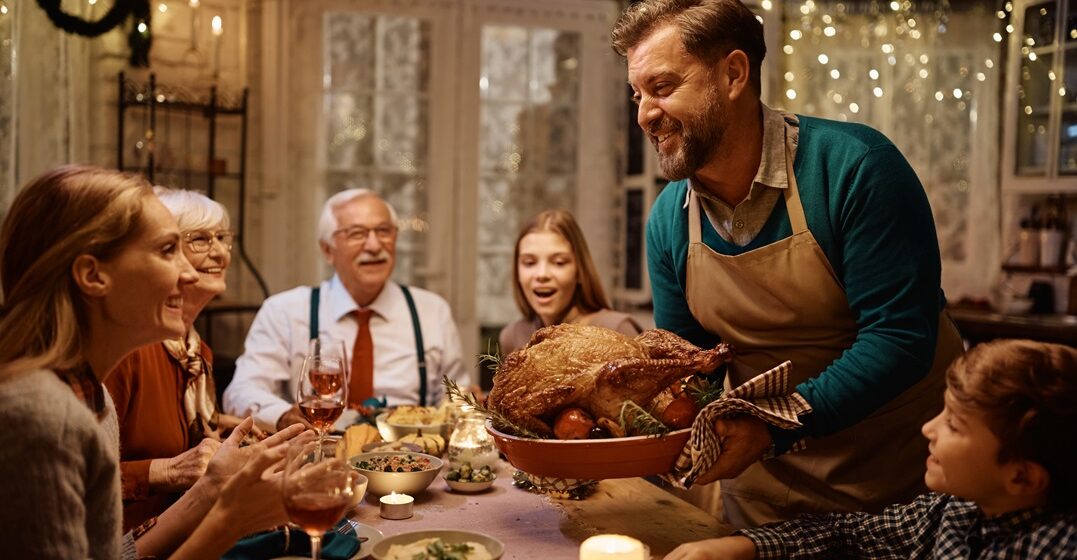by Laura Jones
Published on April 18, 2024
When you think of Thanksgiving, images of turkey feasts, pumpkin pies and big family gatherings probably come to mind. But that’s the American Thanksgiving. German Thanksgiving — Erntedank — has certain traditions in common with the American holiday, though Germans also embrace many customs all their own.
Whether you’re learning German or simply interested in spending a familiar holiday in a foreign culture, it’s worth exploring everything that makes German Thanksgiving so, well, German.
Erntedank (also known as Erntedankfest) translates to “Harvest Thanksgiving.” Like many harvest festivals across Europe, it traces its origins back to ancient agricultural rituals dedicated to giving thanks for a bountiful harvest season and seeking blessings for the forthcoming year’s crops. In many ways, Erntedank is more closely aligned with these ancient harvest festivals than it is with the relatively young holiday of American Thanksgiving.
In its earlier forms, Erntedank was a predominantly rural ritual usually celebrated on the autumnal equinox in September. Over time, German Thanksgiving evolved into a Christian tradition closely associated with the Church, and it remains so today.
Per the recommendation of the German Catholic Church, German Thanksgiving Day is typically observed on the first Sunday in October. But the exact date of festivities varies from region to region. For example, the Swiss and Austrians usually celebrate Erntedank in mid-September.
German Thanksgiving celebrations include religious ceremonies, communal gatherings and, of course, food. The celebrations vary by region but are mostly held in rural areas. Often, there’s a parade with beautifully decorated floats and people in traditional clothing, creating the atmosphere of a country fair.
Church services are usually followed by singing and dancing, and church altars are adorned with seasonal fruits, vegetables and grains. The altar centerpiece is often a harvest crown made of wheat. In cities, churches often observe German Thanksgiving with an evening service.
No Erntedank celebration would be complete without a feast of local foods. There’s no one traditional German Thanksgiving dinner, but plates are usually piled high with traditional German foods.
Meat and potatoes, in some form, are typically present. Bread is also a key feature. In the past, the centerpiece of the meal was goose or Masthühnchen, a chicken especially fattened up for the occasion. But these days, turkey is also a popular option (thank you, American Thanksgiving!).
Yes, American and German Thanksgiving share common themes of gratitude and feasting. But the two traditions have some notable differences — starting with the food. Turkey is the focal point of the American Thanksgiving meal, but it’s usually accompanied by side dishes you wouldn’t find in Germany, such as marshmallow sweet-potato casserole and American-style stuffing.
Another contrast is the scale of the celebrations. American Thanksgiving rivals Christmas and is one of the main holidays on the calendar. It’s always a public holiday, and it’s always celebrated on a Thursday. German Thanksgiving is not a public holiday, though it generally falls on a Sunday when most people are off work anyway.
Despite its religious roots, American Thanksgiving is more secular than German Thanksgiving, with gratitude, food and American football at the forefront. Perhaps nothing speaks to this secularity more than Black Friday, a quasi-holiday that immediately follows Thanksgiving and features stores offering huge discounts on products. German Thanksgiving is not associated with this type of consumerism.
If you happen to be in Germany in early October, particularly in a rural area, you might get to celebrate Erntedank. You may enjoy a parade and a village fair with traditional dancing and dress, and you may even have the chance to attend a church service. Of course, nothing beats being invited to share a meal and taste some of the delicious traditional foods of the region, and we hope you will be so fortunate.
